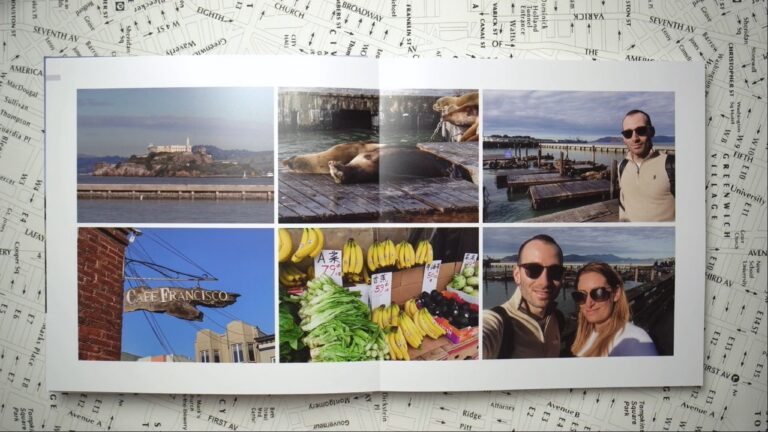Creating a travel photo book is an art form. It’s a way to encapsulate the essence of your adventures, transforming fleeting moments into lasting memories. In this journey of crafting your photo book, choosing the right pictures is pivotal.
Here’s how to curate your collection with precision and sentiment.
Understanding Your Narrative
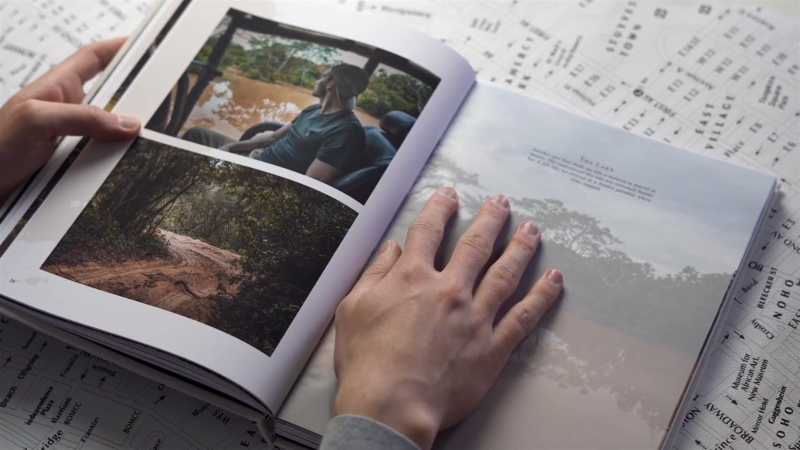
Every trip tells a story. Start by identifying the theme of your journey. Was it a quest for relaxation, an adventurous excursion, or a cultural exploration? This theme becomes your narrative thread, guiding your photo selection process. Think of your photo book as a novel; each photo is a chapter contributing to the overarching tale.
Your narrative doesn’t need to follow a chronological order necessarily. Instead, it can flow based on emotional impact, colors, landscapes, or even the people you meet. This narrative helps in filtering out photos that might be beautiful but don’t contribute to the story you’re aiming to tell.
The Impact of First Impressions
The opening image of your photo book sets the tone. Choose a photo that captures the essence of your trip or one that holds a significant memory. This could be a breathtaking landscape, a candid shot, or an iconic landmark.
This image is your hook; it should grab the attention and make the viewer eager to turn the page. The first image is like the opening sentence of a book – it should be powerful, evocative, and set the stage for what’s to come. Think of it as the entryway into your journey, inviting the viewer to step into your experiences.
Quality Over Quantity
While it’s tempting to include as many photos as possible, quality should trump quantity. Each photo should earn its place in your photo book. Ask yourself, does this photo add to the story?
Is it visually appealing or emotionally resonant? Sometimes, fewer, more impactful photos can make your book more powerful than a cluttered collection of average images. For inspiring photo books, click here.
Balancing Variety and Cohesion
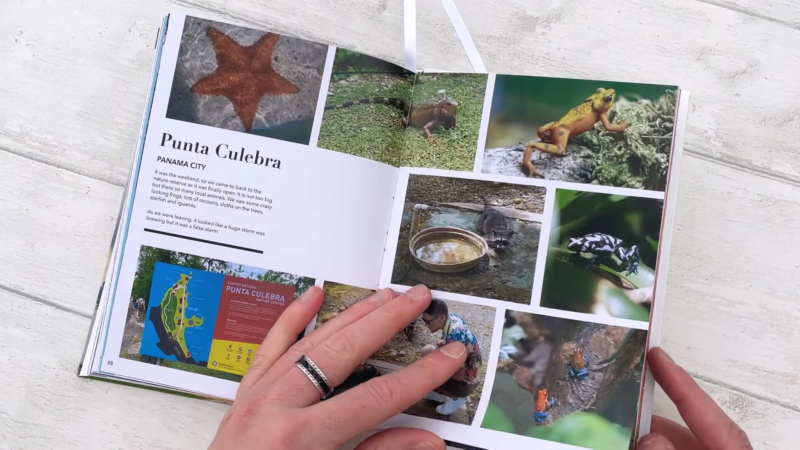
Variety keeps the photo book engaging, but cohesion maintains its flow. Strive for a balance. Include a mix of landscapes, close-ups, action shots, and portraits. However, ensure they all align with your theme.
For instance, if your trip was about exploring nature, a mix of vast landscapes, detailed shots of flora and fauna, and images capturing your interaction with nature could be ideal. Cohesion can also be achieved through consistent editing styles or color schemes, giving your photo book a professional and polished look.
When curating your collection, consider incorporating snapshots from Crete and Rhodes, the top Greek islands known for offering a perfect blend of history, culture, and scenic beauty, seamlessly enhancing the overall narrative of your travel adventure.
Capturing Emotions and Moments
Some photos might not be technically perfect but they hold invaluable emotional weight. A blurry photo of laughter or a candid moment can sometimes convey more than a perfectly composed landscape.
These photos breathe life into your photo book, making it uniquely personal. Remember, the aim is not just to showcase the places you visited, but also to convey the feelings and experiences you had.
The Role of People in Your Photos
Including photos of yourself, your travel companions, or even locals adds a personal touch. These images tell a more comprehensive story of your journey, depicting not just where you were, but who you were with and the interactions you had.
Photos with people in them tend to evoke more emotions, making your photo book more engaging and relatable.
The Unspoken Beauty of Negative Space
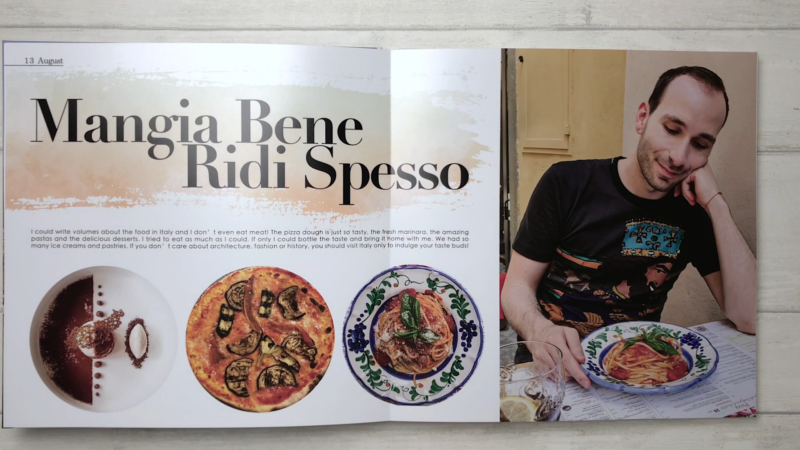
Sometimes what you leave out is as important as what you include. Negative space in photography can be powerful. It’s not just about the subject of the photo but also about the space around it.
This space can add a sense of calm, scale, or drama to your photo book. It allows the viewer’s eye to rest and can make the subject stand out more. In your photo book, these images can provide a visual break, creating a balanced and pleasing aesthetic.
Embracing the Details
Often, the magic of a travel experience lies in the details. Close-up shots of local cuisine, textures of fabrics, architectural details, or nature’s intricacies can add a rich layer to your photo book. These shots work as beautiful interludes, breaking up the monotony of similar shot types.
They invite the viewer to appreciate the smaller, often overlooked aspects of a destination. When selecting close-ups, consider their significance to your journey.
Did that intricately patterned tile tell a historical tale? Did the vibrant street food add a burst of local flavor to your travels? These images, while small in scale, can carry substantial weight in your narrative.
Capturing the Essence of Place
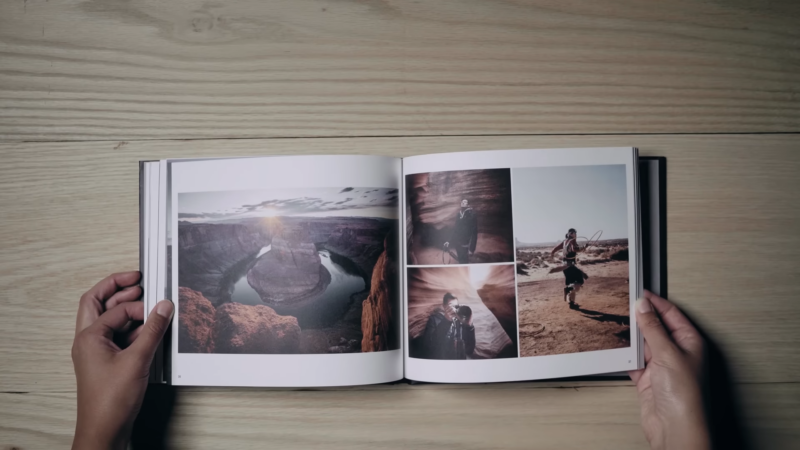
Landscapes and cityscapes are quintessential to any travel photo book. They set the context and give a sense of place. When choosing these shots, look for images that best capture the spirit of the location.
A mix of iconic vistas and off-the-beaten-path scenes can offer a well-rounded perspective of your destination. Pay attention to lighting and weather conditions in these photos – a moody sky or golden hour light can add a dramatic effect, enhancing visual storytelling.
The Importance of Night Photography
Night photography offers a different lens through which to view a destination. The play of light and shadows, illuminated landmarks, or the hustle and bustle of nightlife add a dynamic dimension to your photo book.
These shots can be challenging to capture but are worth the effort. They juxtapose the daytime experiences and showcase the destination’s diverse facets. When selecting night photos, ensure they are clear and vivid to make a strong impact.
Reflecting on Personal Growth and Change
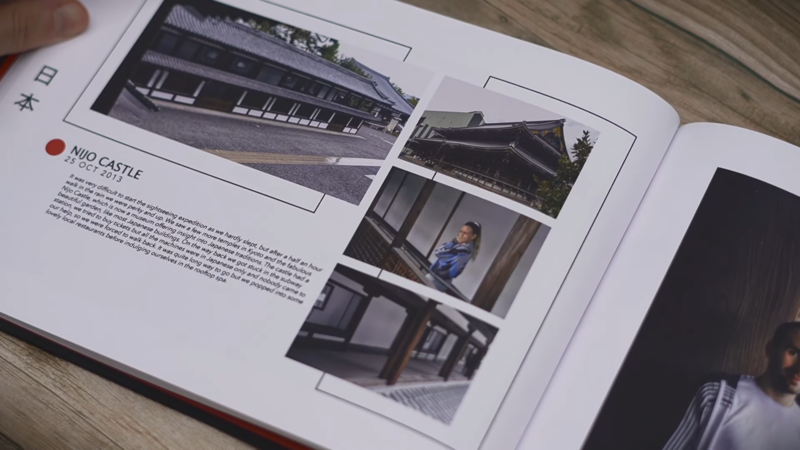
Your travel photo book can also be a reflection of your personal journey. Include photos that depict how you evolved during the trip. Was there a moment of realization, a challenge you overcame, or a new skill you acquired?
A photo of you in deep thought, trying something new, or interacting with locals can tell a powerful story of personal growth. These images make your photo book more than a travel diary; they transform it into a memoir of self-discovery.
The Final Page
The closing image of your photo book is as crucial as the opening. It should leave a lasting impression, encapsulating the essence of your journey or hinting at future adventures. Consider an image that sums up your experience or one that leaves the viewer with a sense of longing or reflection.
This final shot is your closing statement, the period at the end of an exhilarating sentence that was your journey. It should resonate with the viewer, prompting them to linger on the memories you’ve shared.
Related Posts:
- 16 Best Locations for Your Dubai Pre-Wedding Photos…
- Can You Fake Your Location to Book Cheaper…
- Is It Better to Drive or Fly Short Distances? -…
- Norwegian Cruise Line vs. Royal Caribbean - Which is Better?
- How Long Do The Catacombs In Paris Take To Explore?…
- Are Glass Splashbacks Worth It? Tips to Decide on…

